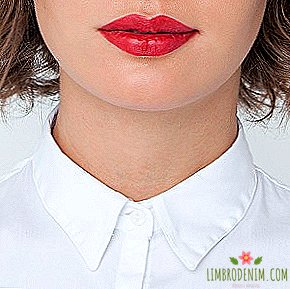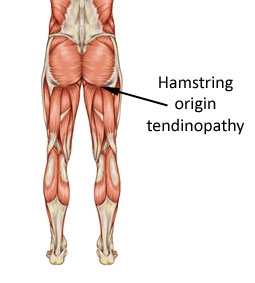Fallen Angels: Why "perfect" underwear shows are archaism
This week in New York will be held Victoria's Secret show. Its producers are working more than diligently - dozens of materials are published from year to year with the headlines “Victoria's Secret angels”, “Victoria's Secret angels eat”, and the list goes on. At the same time, an important question is overlooked: are these shows generally relevant?
Text: Anton Danilov

The word "these" at the end of the previous sentence is not a reservation: not only Victoria's Secret, but many other underwear brands make similar shows. It doesn’t matter whose collection you are watching - Etam, Intimissimi or Calzedonia - the concept is still the same: high, certainly thin and conventionally attractive models are walking on the catwalk to the music of some popular artist. Victoria's Secret - the authors of the genre: the first show with Stephanie Seymour as the main star was held in August 1995. The upcoming show will be the 23rd in the history of the brand. The location of the show is chosen anew each time: last year, for example, the "angels" of Victoria's Secret flew to Shanghai, before last they gathered in Paris. Only a few manage to get to the show: the brand invites only stars, loyal bloggers and no less loyal journalists. Add to this the price of invitations for "ordinary" viewers (they do not officially exist, but some concierge services take up a non-standard request) of 15 thousand dollars - and get the recipe for the most anticipated show of the season.
The paradox of this fashionable phenomenon is that the majority of viewers (both online and offline) do not look at their underwear: a photo in a clipping and lookbooks cope with this task much better. The main actors of the show are, of course, models. The "chosen ones" have their name - Victoria's Secret "angels". Thousands and thousands of girls engaged in the modeling business dream about this high status. To “make” a show of an American brand means to officially climb to the top of a career. She, in turn, still promises a continuous model engagement and many thousands of advertising contracts.
It seems that diversity reigns on the podium of the American brand, because among the models there are representatives of different nationalities. However, upon closer inspection, this "diversity" falls apart into pieces. Whatever the size, there are still more white models, and African-American mannequins (for example, Jasmine Tux or Lais Ribeiro) often straighten their hair and generally fit into European standards of beauty. There is no need to speak about the difference in the models' figures: absolutely everything is thin and tall, as the long-time canon of the "ideal woman" prescribes. The price, which is given the "perfect" body, also talked more than once.
It seems that diversity reigns on the catwalk, but on closer examination this “diversity” falls apart into pieces.
Bridget Malcolm, who appeared on the “angelic” podium twice, in March spoke about dysmorphophobia - hatred of her own body, which she suffered during the collaboration with the brand. Bridget opened her own blog, which now helps readers to accept themselves and to love their body. Narrating about her past life, Malcolm confesses: she spent 2-3 hours a day in the hall, was always undernourished and panicked because someone suggested she eat a piece of fruit. In another record, Bridget told how she was embarrassed for her "fullness" when she wore the 40th size of clothes. “While taking a swimsuit, one girl looked at my stomach with a grin all the time,” Malcolm writes. “I turned to her, smiled, but she didn’t even look into my eyes, continuing to stare at my stomach. Another lady asked me to drag him in, so that my ribs could be seen more. Then she tied a sarong on my hips to “hide them.” They were not just rude women - girls who had 84 centimeters of hips were much more friendly. My options were bigger, but I still climbed into the filming samples, the size of which - 2-4 ".
Preparing for a fashion show is a separate story. Each model has its own "secrets of success", which they generously "share". The most popular are tips to eat protein shakes and train like a damn. But there are really terrifying. Adriana Lima, for example, does not drink water 12 hours before the show, in order to appear even thinner. Alessandra Ambrosio, who this year will miss the show for the first time in 17 years, admits: “For three months I was on a 1200-calorie diet. I hated food delivery service, which brought me a daily ration. I would not be able to go through it again "We all have a lot of stress before the Victoria's Secret show, and it's not just our form. It’s as if all of the energy is sucked out of us."
Probably the most important criterion for the relevance of the brand is the level of sales: after all, the buyer, and in our case, the customer is the main judge, and she votes with her wallet. But with Victoria's Secret sales at least from 2016, things are not very good. In July, the underwear brand reported on the next decrease in sales, which even a long sale could not keep. At this, the troubles of L Brands, which owns “the brand of linen No. 1”, did not end: after the publication of the report, the company's shares fell by 12 percent. In 2018, their value was already falling: for example, in March, the decline was 13.5 percent. In total, they fell by 45 percent over the year, and the forecast is disappointing: financial analysts recommend selling shares of an American brand. “The game is over,” said Jefferies analyst Randal Konik.
A dramatic fall cannot be caused only by improperly built business processes: other brands of linen at the same time boast record sales. The image of a woman who is wearing Victoria's Secret lingerie falls out of the current agenda - especially against the backdrop of a series of sex scandals around the world and the increasingly popular #MeToo movement.
Ideas about female sexuality are changing - and Victoria's Secret, it seems, does not keep up with them. Without fearing the wrath of the advertising department, progressive western publications write about this. For example, i-D material comes out with the headline "Victoria's Secret doesn’t understand what women now want." “Women still want to be sexy,” writes journalist Annie Lord. “Now they just want to be sexy on their own terms. Victoria’s Secret Angels personify an idealized, impossible form of femininity, but society always makes other women strive for it. This hyperfeminine the beautiful version is certainly attractive, but there are other forms of beauty. " Editor Katie Sturino in Refinery29 asks when the American brand will turn towards women whose parameters differ from those of angels, and The Telegraph fashion director Kate Finnigan blames the brand for populism, sexism and pretense. "This show is a pseudo-safe place where women walk in their underwear, comes up with the idea that it is empowering, that the models are under control, that we celebrate sisterhood, fashion and the image of a" healthy body. "None of this is," she says.
The news is that underwear brands that do not share these principles of the American company, today remain in the win. Real lingerie customers look different than Victoria's Secret “angels” - and not only small indie brands that produce books with real-size women and without impressive retouch know this. Canadian linen brand Addition Elle arranges underwear shows with Ashley Graham as a guest star - and the hall at the end of the fashion show applauds. Even Sports Illustrated, an apologist for what is called a “beach body” in the Western press, drastically changes the representation of women in underwear. Now on the covers and even shows of the sports publication there is a place for women with different types of figure and for nursing mothers.
The news is that underwear brands that do not share the principles of the American company, today are the winners
The queen of the "new underwear fashion" was Rihanna. In September, the pop icon presented a new collection of lingerie of its brand Savage x Fenty in the format of an immersive show. The diversity in her case turned out to be completely not blown: women of different builds, ages and skin colors came out onto the catwalk, stylized as a wild forest - and the show turned out fantastic. Interestingly, among the models were the sisters Hadid - the favorite of Victoria's Secret. The idea is simple: canonically beautiful girls fit well into the changed fashionable reality, but now their beauty is just a special case, not a general rule.
What will happen to Victoria's Secret next? A good question, the answer to which, probably, does not even know the brand management. The company plans to rebrand, but there is reason to doubt its success. “Considering how fundamental the“ sexy image ”has become for the brand, we believe that it can be very difficult to catch up with current trends,” The Guardian quotes analysts as saying. It seems that the first step would be to abandon the traditional fashion show of the American brand or change its concept, thanks to which not only the very thinner Adriana Lima, Behati Prinslu or Stella Maxwell could take the podium. It will happen or not, in many respects, and will decide the fate of the American brand: even he will not be able to ignore the needs of real women for so long.
Photo: Victoria's secret





